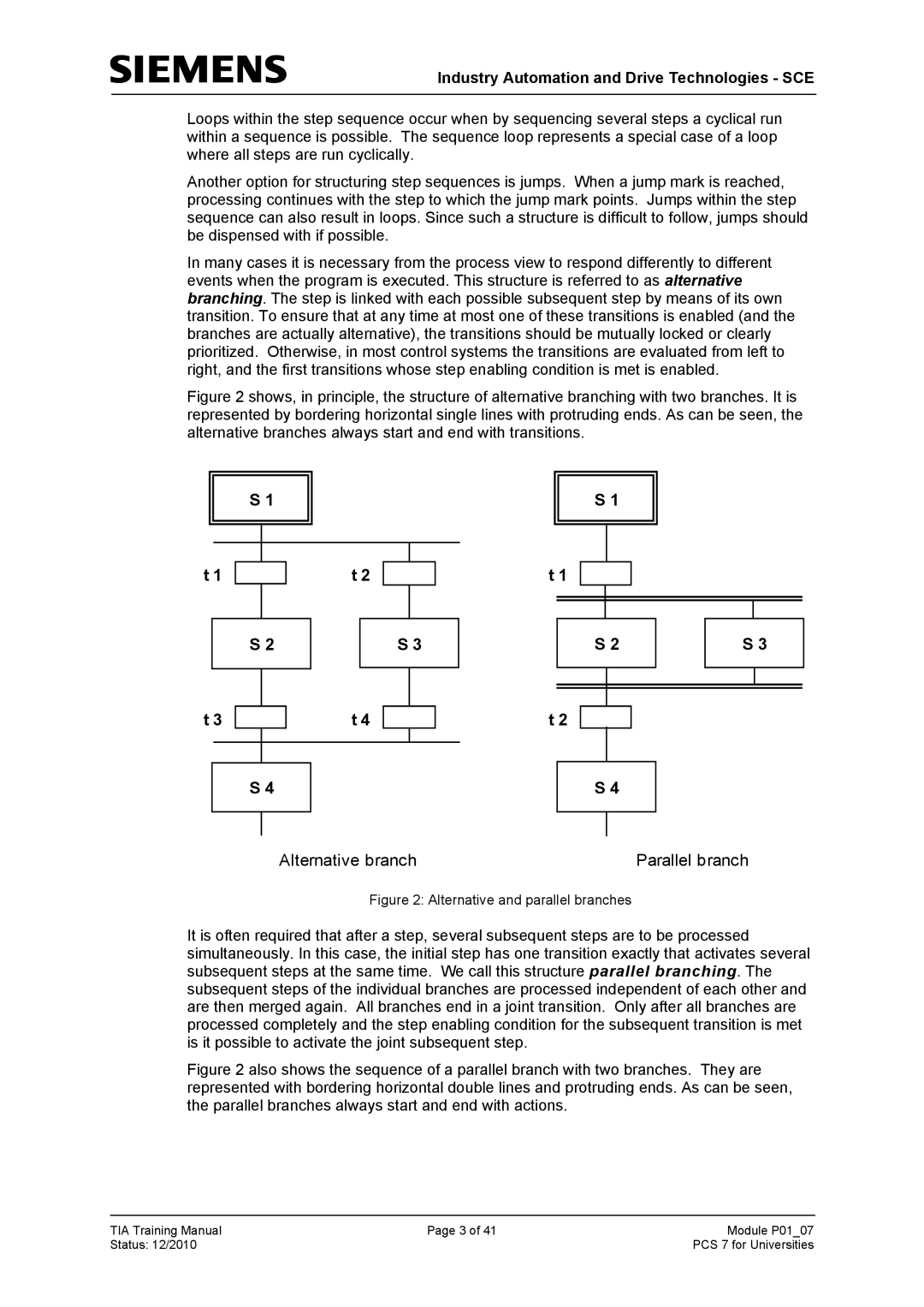
Industry Automation and Drive Technologies - SCE
Loops within the step sequence occur when by sequencing several steps a cyclical run within a sequence is possible. The sequence loop represents a special case of a loop where all steps are run cyclically.
Another option for structuring step sequences is jumps. When a jump mark is reached, processing continues with the step to which the jump mark points. Jumps within the step sequence can also result in loops. Since such a structure is difficult to follow, jumps should be dispensed with if possible.
In many cases it is necessary from the process view to respond differently to different events when the program is executed. This structure is referred to as alternative branching. The step is linked with each possible subsequent step by means of its own transition. To ensure that at any time at most one of these transitions is enabled (and the branches are actually alternative), the transitions should be mutually locked or clearly prioritized. Otherwise, in most control systems the transitions are evaluated from left to right, and the first transitions whose step enabling condition is met is enabled.
Figure 2 shows, in principle, the structure of alternative branching with two branches. It is represented by bordering horizontal single lines with protruding ends. As can be seen, the alternative branches always start and end with transitions.
S 1
S 1
t 1 | t 2 | t 1 |
|
S 2 | S 3 | S 2 | S 3 |
t 3 | t 4 | t 2 |
|
S 4 |
| S 4 |
|
| Alternative branch |
| Parallel branch |
Figure 2: Alternative and parallel branches
It is often required that after a step, several subsequent steps are to be processed simultaneously. In this case, the initial step has one transition exactly that activates several subsequent steps at the same time. We call this structure parallel branching. The subsequent steps of the individual branches are processed independent of each other and are then merged again. All branches end in a joint transition. Only after all branches are processed completely and the step enabling condition for the subsequent transition is met is it possible to activate the joint subsequent step.
Figure 2 also shows the sequence of a parallel branch with two branches. They are represented with bordering horizontal double lines and protruding ends. As can be seen, the parallel branches always start and end with actions.
TIA Training Manual | Page 3 of 41 | Module P01_07 |
Status: 12/2010 |
| PCS 7 for Universities |
